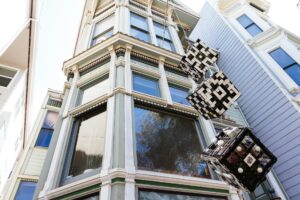
At Rosa Parks Pop-up Pantry, Miguel lights up when he starts talking about his art. He sets down his grocery bags and whips out his phone to show us his latest creation, hanging in front of his second story window: a mobile made entirely of syringes (with the needles removed, of course), that blows and gently spins in the breeze, while explaining: “I used to work for the opera, until I retired five years ago. I also made costumes for theatre groups, foundations and drag queens. I have a program going after I retired, [making] mobiles and artwork with the recycled materials I [find] on the street, thrown away.”
A Loss for the Community
Miguel is a longtime member of the arts scene in San Francisco, a gay man who’s been HIV+ for nearly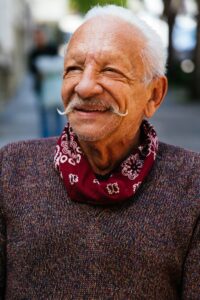 40 years, an activist, and a pantry participant since 2020 in his neighborhood of the Western Addition. He’s also one of roughly 101,000 CalFresh (known as SNAP federally) recipients in San Francisco who saw their grocery budget decimated overnight. This is due to the federal government’s decision to cut emergency allotments, which boosted CalFresh benefits by an average of $160 for recipients in San Francisco during the pandemic. That’s a loss of nearly $12 million a month in food assistance for our neighbors.
40 years, an activist, and a pantry participant since 2020 in his neighborhood of the Western Addition. He’s also one of roughly 101,000 CalFresh (known as SNAP federally) recipients in San Francisco who saw their grocery budget decimated overnight. This is due to the federal government’s decision to cut emergency allotments, which boosted CalFresh benefits by an average of $160 for recipients in San Francisco during the pandemic. That’s a loss of nearly $12 million a month in food assistance for our neighbors.
“I applied for the [CalFresh] benefits at the beginning of COVID. I was having a hard time with money. And it was very nice, especially when they started putting the extra funds in it,” Miguel told us. Miguel says he was receiving close to $200 during the pandemic, but after speaking with a CalFresh representative that same morning we met, he learned he’d be receiving just $23. That’s why the Food Bank Policy & Advocacy team is advocating to raise the minimum benefit to $50 in the state Senate this year – because for Miguel and many others, “it’s not worth going through all the [paperwork] trouble for $20.”
Meals are Best Shared
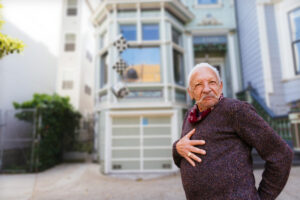 For Miguel, his CalFresh benefits were a supplemental support that helped him stretch his budget and extend a little kindness to other friends who were struggling during the throes of the pandemic. “I was able not only to get things for myself, but I was able to invite friends to get food with me so we can have dinner together. I did it with two friends, maybe every two weeks. Eating alone is not really the best thing. Having company and being able to provide something a little extra, that was very nice. It really made a difference for me and my friends.”
For Miguel, his CalFresh benefits were a supplemental support that helped him stretch his budget and extend a little kindness to other friends who were struggling during the throes of the pandemic. “I was able not only to get things for myself, but I was able to invite friends to get food with me so we can have dinner together. I did it with two friends, maybe every two weeks. Eating alone is not really the best thing. Having company and being able to provide something a little extra, that was very nice. It really made a difference for me and my friends.”
In addition to dinners with friends, Miguel finds support through groups like the 50 Plus Network from the SF AIDS Foundation, which connects long-term HIV survivors through meetups and events. Miguel and his current housemate also stop by the Rosa Parks Senior Center most days for lunch, and utilize the Food Bank’s weekly pantries, where Miguel picks up groceries for them both: “The sweet potatoes are for my roommate, because he can’t come to the pantry – he’s disabled. So [the pantry] not only helps me, it helps someone else.”
A Positive Ripple Effect
As federal lawmakers strip proven poverty-fighting programs and safety nets from our neighbors, and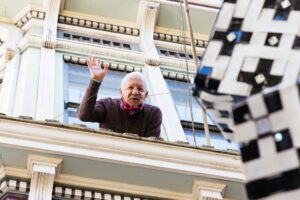 leave food banks to pick up the slack, it’s essential that the Food Bank maintains access to the fresh produce, proteins, and grains that 53,000 neighbors rely on weekly to nourish themselves. “The benefit is greater than just food,” Miguel explained to us. “At my age, I don’t think there’s any stigma – I encourage other people to apply for these services. I have diabetes, so I have to be careful about what I’m eating. And besides the food, I can use the money [I save] on other things that are beneficial for my health or enjoyment. It’s a ripple effect; it magnifies your life in all these positive ways.”
leave food banks to pick up the slack, it’s essential that the Food Bank maintains access to the fresh produce, proteins, and grains that 53,000 neighbors rely on weekly to nourish themselves. “The benefit is greater than just food,” Miguel explained to us. “At my age, I don’t think there’s any stigma – I encourage other people to apply for these services. I have diabetes, so I have to be careful about what I’m eating. And besides the food, I can use the money [I save] on other things that are beneficial for my health or enjoyment. It’s a ripple effect; it magnifies your life in all these positive ways.”



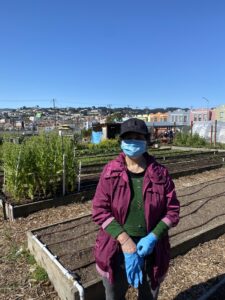
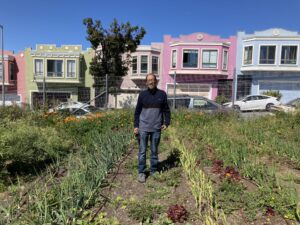 her history of civic contribution.
her history of civic contribution. 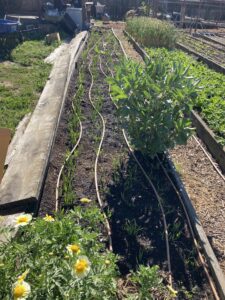 app] to stay in touch after leaving the farm.
app] to stay in touch after leaving the farm. 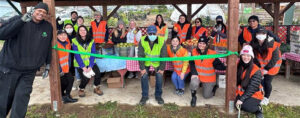 As partners reopen, “we’re reaching out to neighbors [currently enrolled in Food Bank-run pantries] to let them know they have a choice to return to their neighborhood pantry,” said Tina Gonzales, Director of Community Partnerships at the Food Bank. “When a pantry reopens, it’s exciting for people who used to go there – that’s their community.” Plus, pantries run by our partners will help us scale back our large Food Bank-run sites (which opened during the pandemic to meet the increased need, and are nearly all at capacity), making them smaller and more manageable.
As partners reopen, “we’re reaching out to neighbors [currently enrolled in Food Bank-run pantries] to let them know they have a choice to return to their neighborhood pantry,” said Tina Gonzales, Director of Community Partnerships at the Food Bank. “When a pantry reopens, it’s exciting for people who used to go there – that’s their community.” Plus, pantries run by our partners will help us scale back our large Food Bank-run sites (which opened during the pandemic to meet the increased need, and are nearly all at capacity), making them smaller and more manageable. 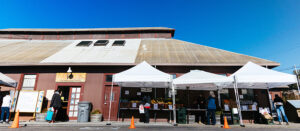 The town of Pt. Reyes Station itself is, by all accounts, pretty tiny. But the reach of local community hub and Food Bank partner
The town of Pt. Reyes Station itself is, by all accounts, pretty tiny. But the reach of local community hub and Food Bank partner 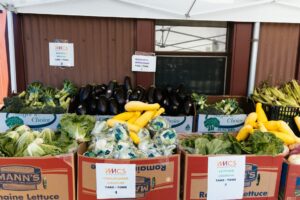
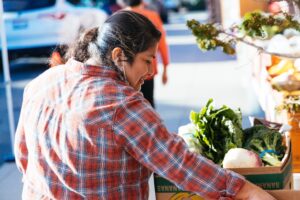 During the intense flooding back in December, “People were saying, ‘We have no power, we lost everything in the fridge,’” Alma shared. “Those days we were very busy, and we operated with no power. We had a generator, and we plugged in everything and continued [all our services]. People were so happy that we had food.”
During the intense flooding back in December, “People were saying, ‘We have no power, we lost everything in the fridge,’” Alma shared. “Those days we were very busy, and we operated with no power. We had a generator, and we plugged in everything and continued [all our services]. People were so happy that we had food.”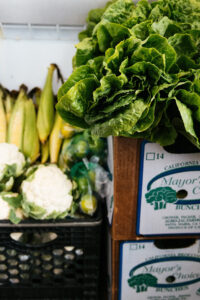 income families in West Marin with unexpected expenses,” shared Yareli Cervantes, Emergency Assistance Program Manager at WMCS. “Just by serving food, we’re able to really get to know people and identify their needs. It opens up the conversation for them to come seek out financial assistance.”
income families in West Marin with unexpected expenses,” shared Yareli Cervantes, Emergency Assistance Program Manager at WMCS. “Just by serving food, we’re able to really get to know people and identify their needs. It opens up the conversation for them to come seek out financial assistance.”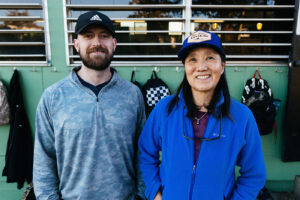 an after-school program for mainly 6
an after-school program for mainly 6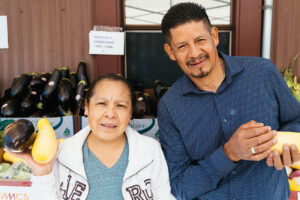 provide tailored services for the needs of their communities
provide tailored services for the needs of their communities 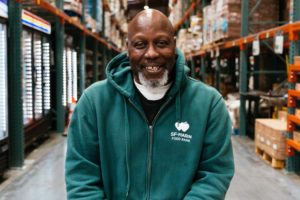 Step onto the shop floor at the Pennsylvania Warehouse and you’ll be greeted by racks filled with just about every item under the sun: fresh fruits and vegetables (of course), canned beans and proteins, fresh breads and pastries, eggs, frozen proteins like chicken breasts, and assorted dry, fresh, and frozen grocery items from supermarkets all over San Francisco.
Step onto the shop floor at the Pennsylvania Warehouse and you’ll be greeted by racks filled with just about every item under the sun: fresh fruits and vegetables (of course), canned beans and proteins, fresh breads and pastries, eggs, frozen proteins like chicken breasts, and assorted dry, fresh, and frozen grocery items from supermarkets all over San Francisco. 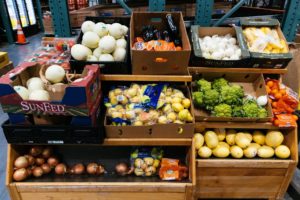 Henry says that lately, “demand is very high, with a limited supply,” because of inflation and supply chain issues, driving home the need for continued support from our community as we strive to keep our shop floor racks full for our neighbors and partners.
Henry says that lately, “demand is very high, with a limited supply,” because of inflation and supply chain issues, driving home the need for continued support from our community as we strive to keep our shop floor racks full for our neighbors and partners. 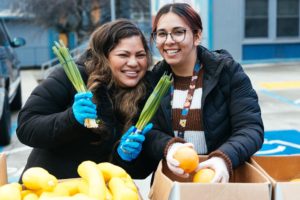 garden sits at the top of the stairs.
garden sits at the top of the stairs. 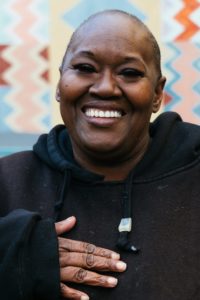 community – but that’s not all.
community – but that’s not all.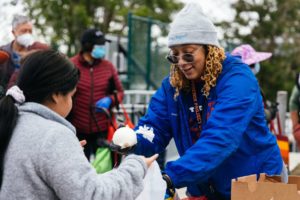 Kiani, a life coach at the Phoenix Project and a regular pantry volunteer, says that “a lot of the work I’ve been doing here with the youth is healing. How do we address the traumas that we’ve been through and how they’ve impacted us? How do we transform that into something more productive or conducive to your success?”
Kiani, a life coach at the Phoenix Project and a regular pantry volunteer, says that “a lot of the work I’ve been doing here with the youth is healing. How do we address the traumas that we’ve been through and how they’ve impacted us? How do we transform that into something more productive or conducive to your success?” “Hey Trav!” or “My friend!”
“Hey Trav!” or “My friend!” 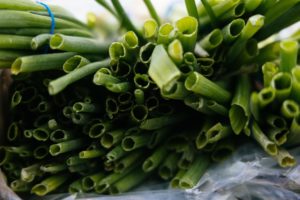 activist and advocate is something he never saw coming. With the trust of the community on one hand, and new connections to resources on the other, he’s the “perfect bridge.”
activist and advocate is something he never saw coming. With the trust of the community on one hand, and new connections to resources on the other, he’s the “perfect bridge.” 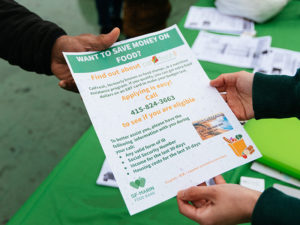 “I pick up groceries from the food pantry in the Canal (San Rafael) on Tuesdays, and the rest I buy with my food stamps. Last month, I received $211. Now, the letter from the county says I’ll receive $23, at most $29,” Gladys told us over the phone in Spanish. As a senior, grocery shopping is already made difficult by mobility issues: “My son will often go shopping for the both of us. I’m scared I’m going to fall.” Now, it will be doubly difficult without the emergency allotments she depended on previously.
“I pick up groceries from the food pantry in the Canal (San Rafael) on Tuesdays, and the rest I buy with my food stamps. Last month, I received $211. Now, the letter from the county says I’ll receive $23, at most $29,” Gladys told us over the phone in Spanish. As a senior, grocery shopping is already made difficult by mobility issues: “My son will often go shopping for the both of us. I’m scared I’m going to fall.” Now, it will be doubly difficult without the emergency allotments she depended on previously. 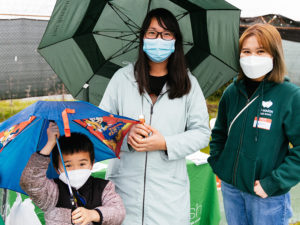 and Advocacy team continues to push at the federal level for benefits that better reflect the cost of living in our counties, and our CalFresh team continues assisting households in applying and securing the benefits they qualify for, we need our community members and local elected officials to rally in support of our neighbors facing food insecurity.
and Advocacy team continues to push at the federal level for benefits that better reflect the cost of living in our counties, and our CalFresh team continues assisting households in applying and securing the benefits they qualify for, we need our community members and local elected officials to rally in support of our neighbors facing food insecurity. 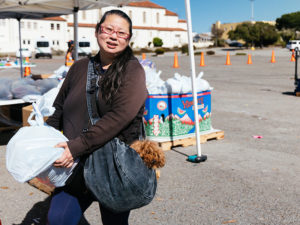 With her rescue dog Charlie slung over her hip in a crossbody bag (she says, “my passion is, I love dogs”), Cilla Lee was hard to miss at the Stonestown Pop-up Pantry where we met. And as she talked, three things became apparent: Cilla is a woman with a lot of ideas, a lot of drive, and a lot of herself to give. A San Franciscan since the age of five, she says that the pandemic “made [her] step up” when it came to supporting her community.
With her rescue dog Charlie slung over her hip in a crossbody bag (she says, “my passion is, I love dogs”), Cilla Lee was hard to miss at the Stonestown Pop-up Pantry where we met. And as she talked, three things became apparent: Cilla is a woman with a lot of ideas, a lot of drive, and a lot of herself to give. A San Franciscan since the age of five, she says that the pandemic “made [her] step up” when it came to supporting her community. 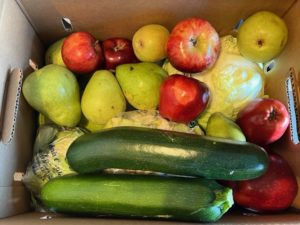 upon the concept of “Buy-Nothing Groups,” virtual and occasionally in-person communities where immediate neighbors exchange all types of goods, services and information– all for free, all from their own abundance, all as part of a “gift economy.”
upon the concept of “Buy-Nothing Groups,” virtual and occasionally in-person communities where immediate neighbors exchange all types of goods, services and information– all for free, all from their own abundance, all as part of a “gift economy.” 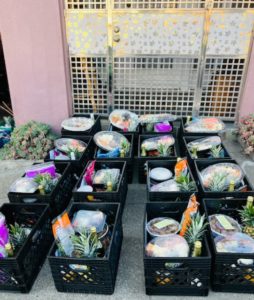 Cilla became the admin of the Outer Richmond Buy Nothing group on Facebook. While food isn’t often the primary focus of Buy Nothing groups, in the early pandemic, food donations started rolling in. At first, she started out by making baked goods and offering them up to add a little sweetness to her neighbor’s days.
Cilla became the admin of the Outer Richmond Buy Nothing group on Facebook. While food isn’t often the primary focus of Buy Nothing groups, in the early pandemic, food donations started rolling in. At first, she started out by making baked goods and offering them up to add a little sweetness to her neighbor’s days. 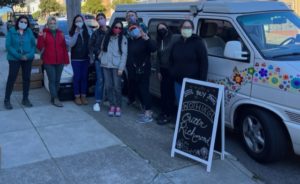
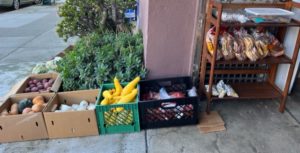
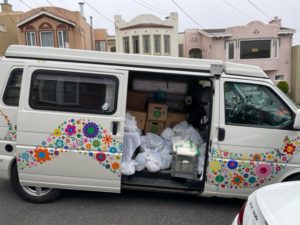
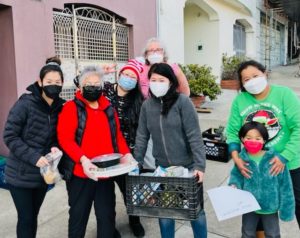 At the Food Bank, we’re grateful to learn from and be in partnership with people like Cilla, who use their knowledge of their neighbors to find hyper-localized, community-specific solutions and novel ways to fight hunger. Ultimately, like Cilla says, at the heart of it all is the gift of connecting with our neighbors– and food is a pathway to do just that.
At the Food Bank, we’re grateful to learn from and be in partnership with people like Cilla, who use their knowledge of their neighbors to find hyper-localized, community-specific solutions and novel ways to fight hunger. Ultimately, like Cilla says, at the heart of it all is the gift of connecting with our neighbors– and food is a pathway to do just that.
Share